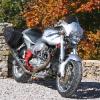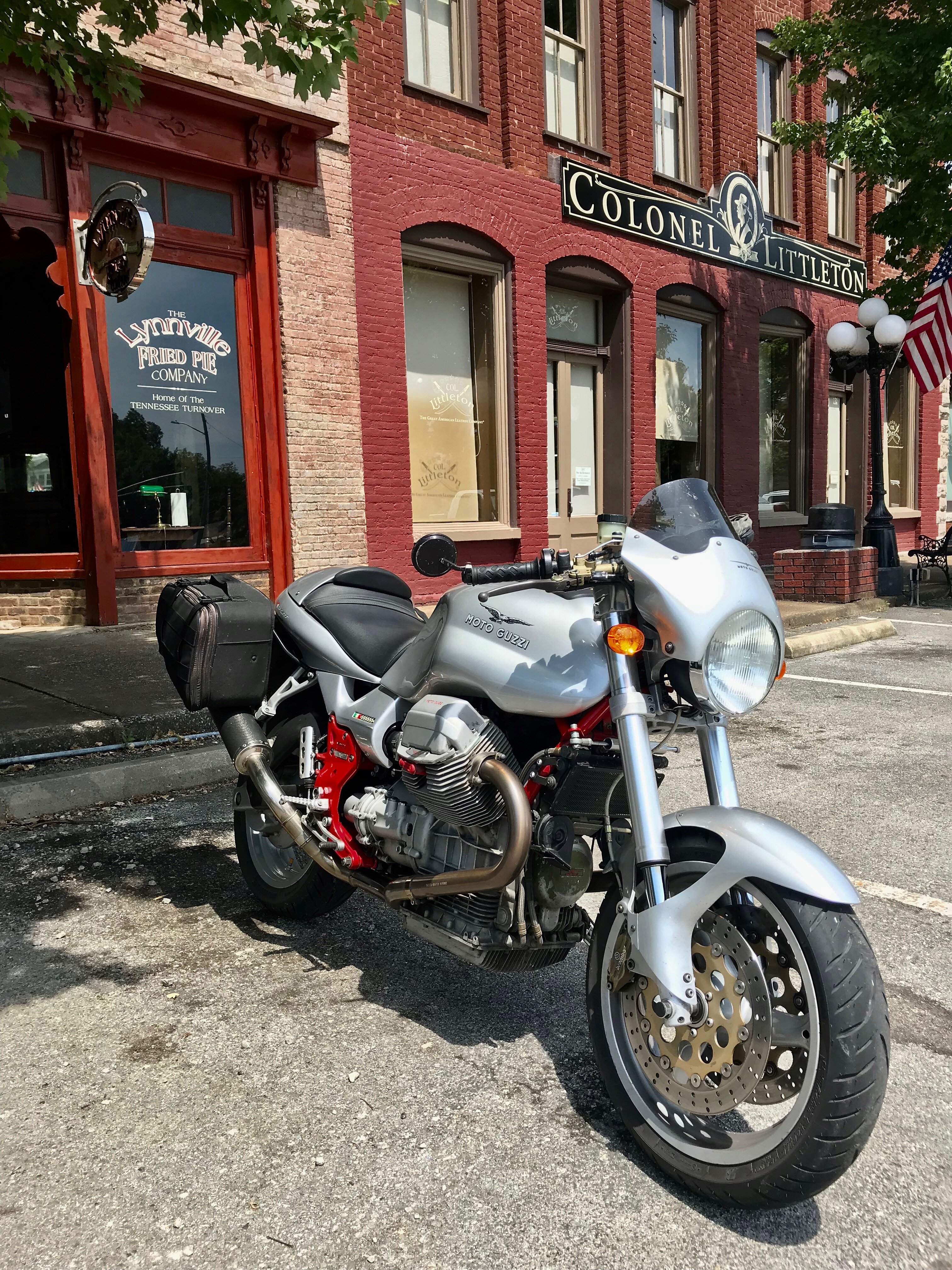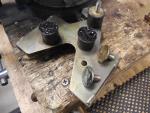-
Posts
20,491 -
Joined
-
Last visited
-
Days Won
1,188
Content Type
Profiles
Forums
Events
Gallery
Community Map
Everything posted by docc
-

Rear drive needle bearing and swing arm restoration
docc replied to Bjorn's topic in Technical Topics
Bjorn, I hate to be one to point this out, but . . . there is at least one hammer in every one of your posts. -
Two big hammers, no?
-
Pm chamberlin. Maybe he can find his clutch line in the pile.
-
I guess you'll need to post back with your own answer to your own question . . . Then someone can chime in so you don't feel like you're talking to yourself.
-
Update: So, having just pulled my tank (and 3/4 of the wiring loom, and the rear sub-frame), I've updated this list and have added several more links to other helpful threads. Enjoy your wrenching!
-
So, chamberlin, on another thread (earemike/ "Finally fitted my replacement gauges"), Andy York asks: "That looks really top notch. I looked at the speed hut gauges after Kiwi Roy did his. Yours is about what I was going to do but I swear I read where the gauges were not water proof. Are yours? That was the reason I did not do it. I sometimes get caught in a real frog strangler and would hate to ruin the gauges." What's your take on this? Are the SpeedHut waterproof?
-
I know this Smoke Wrangler that makes house calls . . .
-
So, what does this mean: " . . . a new flywheel in an oil bath instead of the previous alternator dry. " ( rough translation from an Italian site ) The gearbox and alternator cover look identical to the 2013. Did anything change from 2013 to 2014 on the V7?
-
The rubber bushings in the fixed length rod have been known to deteriorate and are not sold separately. That said, mine are still intact after 89,000 miles/ almost 144.000 km.
-

timing cover gasket, metal or original gasket?
docc replied to SanderVdB's topic in Technical Topics
Andy said, "I would use just a dab of blue loctite on the fasteners." Sander, have a look at your chain tensioner while you're in there . . . -
Just curious. What was the outcome of this fix?? The RTV silcone did not work. Scroll up to Post #20, above. It shows a picture of the JB Weld epoxy I used to seal the wire into the sensor. I had already replaced the O-ring and resumed using 20-50 motor oil. That was 3 1/2 years ago, 16,000 miles and still good! Occasionally there is a little haze below the sensor that I simply clean off and make sure the fasteners are tight.
-

timing cover gasket, metal or original gasket?
docc replied to SanderVdB's topic in Technical Topics
Welcome, Sander! Some have found the oil at the front is not the cover, but the timing sensor on the left top of the case. It is worth checking and so much easier to seal than the timing chest! -
What's the plan for the valve and head work?
-
German Ballabio brochure "Die Schöne und das Bieste!"
-

Coil Mounting Bracket Vibrations Isolation Failure
docc replied to Thunderpaugh's topic in Technical Topics
Yeah, yeah, docc never done anything majorly stupid to his Goozee . . . Well, actually . . . . . . . . . there was that one suspension set-up that was pretty bogus. Not more than thousands of other things. -
Look for chamberlin's entire collection of "vintage" Moto Guzzi Sales Brochures in FileShare!
-

Coil Mounting Bracket Vibrations Isolation Failure
docc replied to Thunderpaugh's topic in Technical Topics
Who said anything about "vibration?" I had my right coil zip-tied to the frame for more years than I can remember. No failure. I bet there are a ton of these coils (attached to the bracket) just floating under the frame in the wiring nest. I suppose that would make for excellent vibration isolation! -
So, the lad pulled the trigger! Sounds great! Can't wait to get a ride on it. Thanks to everyone here for the insights!
-

Coil Mounting Bracket Vibrations Isolation Failure
docc replied to Thunderpaugh's topic in Technical Topics
Neat - I'll add that link to the Tank Off Maintenance Checklist. Looks like they would also have the smaller ones used for the ECU (I had to repair two of those also). -
Those look fantastic! What are you using to trigger the speedo? Was the whole thing just plug & play?
-

Coil Mounting Bracket Vibrations Isolation Failure
docc replied to Thunderpaugh's topic in Technical Topics
The Touratech pieces are currently $10US each plus shipping. I found two out of the three coil mounts separated and repaired them by cleaning the metal part on a wire wheel, prepping both sides with a solvent and securing them with a high strength contact adhesive (Shoe Goo or Goop). Others have used "SuperGlue" (cyanoacrylate) , or other adhesives. -
Henk, I wish I were closer to Bern to go see the bike for you. But those are some good km for a bike that age. Better than it sitting! There should be some good maintenance records, yes? BTW, the price looks good for what we see in the States for Rosso Corsa.
-
After replacing the breather hose (with the Moto Guzzi hose from MGcycle) and sealing the distributor cover plate, a little 44 mile ride shows no wetness anywhere. I did take the time to remove the starter and the right side inspection plug and wash out the bell housing with electronics cleaner. Time will now tell if all the wetness that looked like it was coming from the bell housing/ rear of the engine has actually been from the top of the engine. Let's hope!!
-
That'll test the durability of your paint!
- 82 replies
-
That's a really nice one. Not at all like my high mile rat bike. For the record, the pal spring issue arose largely in 2002, although other years have reported it as well. The early gearbox recall was for the "sliding dogs" and the internal "cush drive." Shifting of affected bikes degraded , but did not fail like the broken pawl spring.



